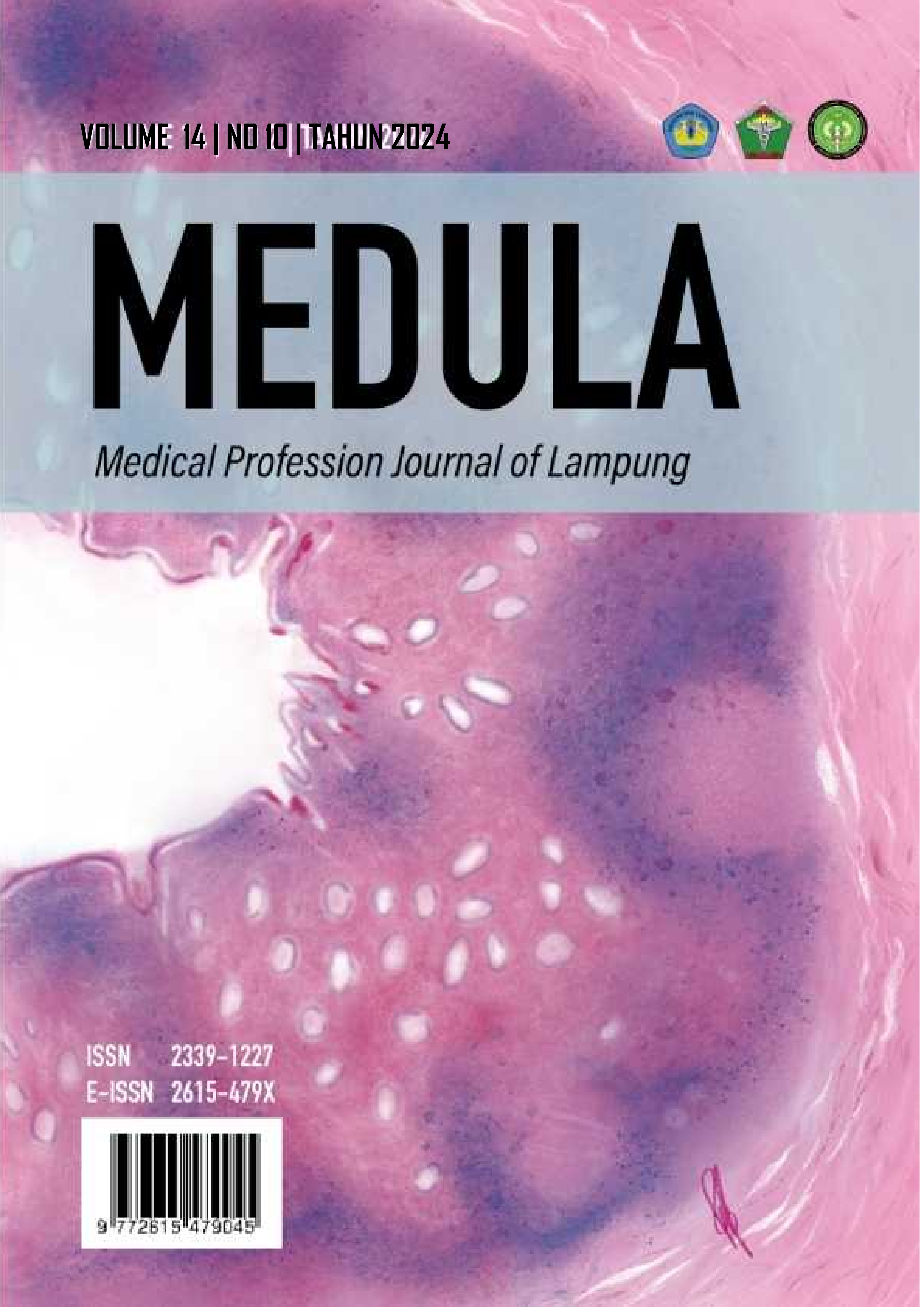Pathogenesis-Based Insights into Acne Vulgaris
DOI:
https://doi.org/10.53089/medula.v14i10.1308Keywords:
Acne Vulgaris, theraphy, pathogenesisAbstract
Acne vulgaris is a chronic inflammatory disease characterized by polymorphic lesions in the form of comedones, papules, pustules, nodules & cysts in predilection locations. Acne vulgaris is the third most frequent case of the 10 most common skin diseases that often come to health services. The incidence of acne vulgaris can occur due to various factors, including increased androgen hormones, increased sebum production and excessive growth of the Cutibacterium acne bacteria. Cutibacterium acnes bacteria play a role in the inflammatory process which increases the worsening of skin conditions with the enzymes and pro-inflammatory factors produced. Young people are the age who suffer from acne vulgaris more often (85%) with a range of 12-25 years. The diagnosis of acne vulgaris is generally easy to make but therapy results are often unsatisfactory. Medications that are often involved in treating acne vulgaris are the use of topical and systemic antibiotics, retinoids, and anti-clindamycin agents. The purpose of this review article is to find out more about acne vulgaris based on pathogenesis. It is hoped that a deeper understanding of the pathogenesis of acne vulgaris will be able to provide much better therapeutic options, resulting in optimal improvements in acne vulgaris therapy.
References
Glauco M et al., “Secondary metabolites from four medicinal plants from northern Chile: Antimicrobial activity and biotoxicity against Artemia salina,” Journal of the Chilean Chemical.
Zanglein, Andrea L. Acne Vulgaris. The New England Journal of Medicine 379. 2018;(14):1343-52.
Sibero HT, Sirajudin A. dan Anggraini D. “Prevalensi dan Gambaran Epidemiologi Akne Vulgaris di Provinsi Lampung The Prevalence and Epidemiology of Acne Vulgaris in Lampung”. Jurnal Farmasi Komunitas. 2019;3(2):62–68.
Sifatullah NUR.Jerawat ( Acne vulgaris ): Review Penyakit Infeksi Pada Kulit,” (November). 2021;19–24.
Teresa et al. Tatalaksana Terkini. 2021.
Afriyanti RN. Akne vulgaris pada remaja. 2015;(4):102–110.
Ogé LK, Broussard A dan Marshall MD. Acne vulgaris: Diagnosis and treatment American Family Physician. 2019;100(8):475–484.
Sari HK. Perbandingan Kualitas Hidup Akne Vulgaris Tipe Ringan Dengan Akne Vulgaris Tipe Berat Di RDUD Dr. H. Abdoel Moeloek Provinsi Lampung. Skripsi. 2018.
Armillei MK et al. Scientific Rationale and Clinical Basis for Clindamycin Use in the Treatment of Dermatologic Disease. Antibiotics. 2024;13(3).
Ash C, Harrison A, Drew S, dan Whittal R. A randomized controlled study for the treatment of acne vulgaris using high-intensity 414 nm solid state diode arrays. Journal of Cosmetic and Lase Therapy. 2015:1-7.
Downloads
Published
How to Cite
Issue
Section
License
Copyright (c) 2025 Medical Profession Journal of Lampung

This work is licensed under a Creative Commons Attribution-ShareAlike 4.0 International License.














